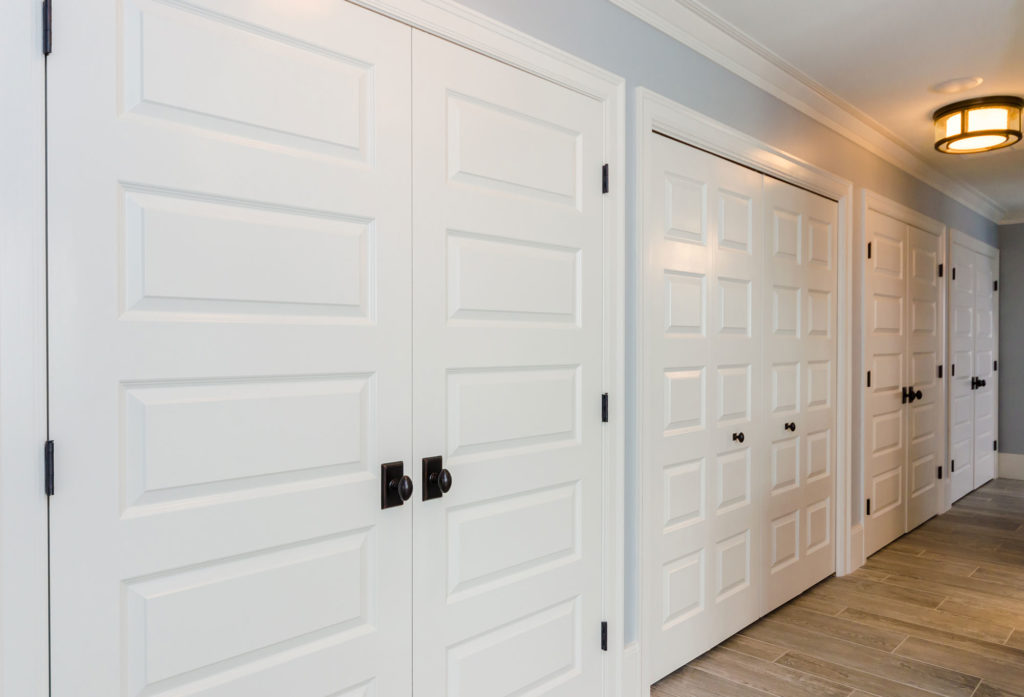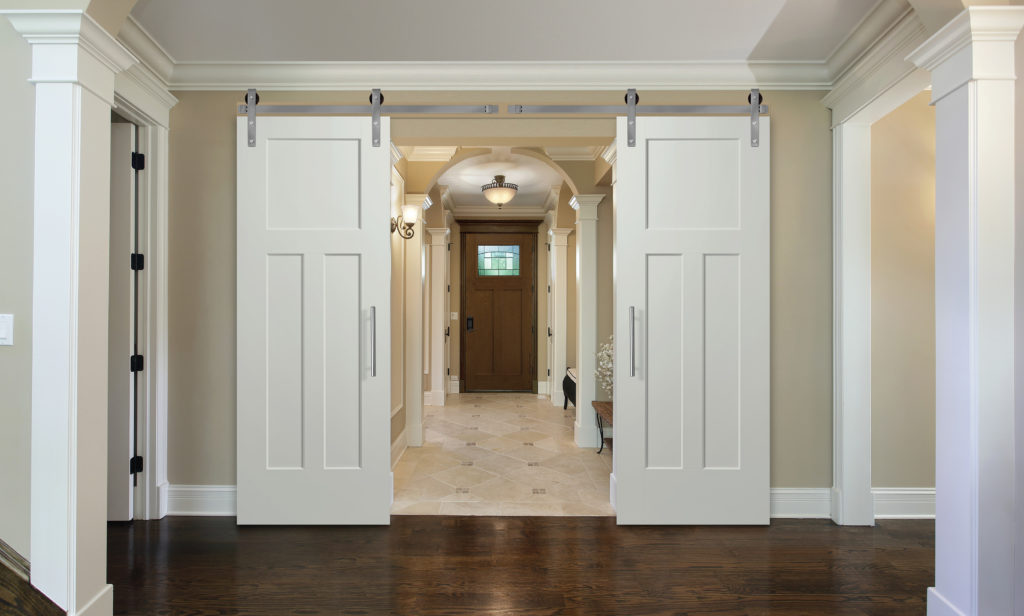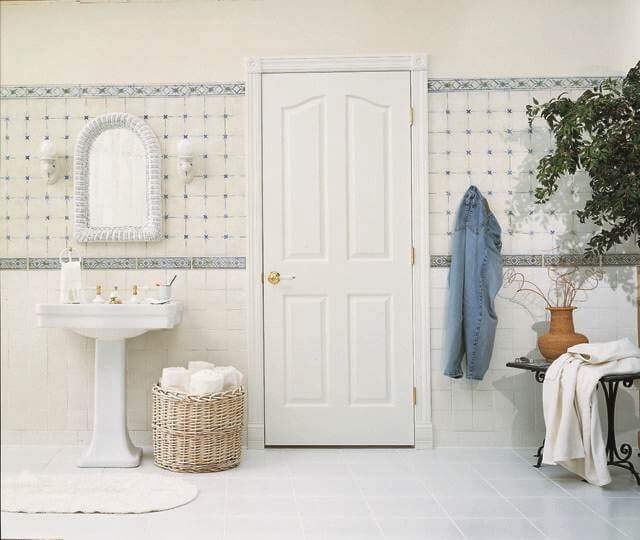Doors are much more than purely functional. Similar to mouldings, interior doors are often features that are not a design priority but can make a big difference in a home’s style. This guide will help you choose interior doors that give your home the perfect feel to complement your style.
Style

Don’t get caught up thinking that all of your interior doors need to be the same. Doors come in so many styles so the possibilities are endless. However, if you do mix and match styles, you will want to have some consistency in features so that your overall look is tied together.
Practicality
Like any other interior design feature, doors go through trending styles. Try to remain practical and consider functionality first. Simply because every other door on HGTV is barn style, doesn’t mean your house has to have the same. Consider how much room you have, the needs of your family, and the overall style of your home.
Swing
When designing a custom door, swing is defined by which side of the door the handle is on when the door opens toward you. Keep in mind that you won’t want a door opening into a hallway.
Soundproofing

Interior doors are both stylish and functional. Each door is given a sound transmission class (STC) number that measures the amount of sound loss through the door. A rating of 25 is low and a normal level of speech can be heard through that door. A rating of 40 is midrange and a rating of 60 is almost soundproof.
Materials
Like styles, interior doors come in many materials. The most common are solid wood, MDF, hollow-core, and solid core.
Solid wood is typically reserved for exterior doors. This material will expand and contract with heat and humidity changes so they are not ideal for bathrooms.
Most modern interior doors are made from medium density fiberboard (MDF). Because it’s a manufactured material it won’t warp like wood and its consistency means its very smooth and easy to paint.
Hollow-core doors are made of plywood or composite. Like the name says, they are hollow making them very inexpensive but also rather ineffectual against sound and temperature.
Similar to a hollow-core door, a solid core door is made of plywood or composite with the difference being it is filled with wood fiber. The wood fiber improves the sound-deadening and temperature control qualities over a hollow-core but is still not as expensive as solid wood.
Whatever your door needs, a Fairview Millwork and Kitchens representative would be happy to help you choose the interior doors right for your project. Call your local Fairivew today.




